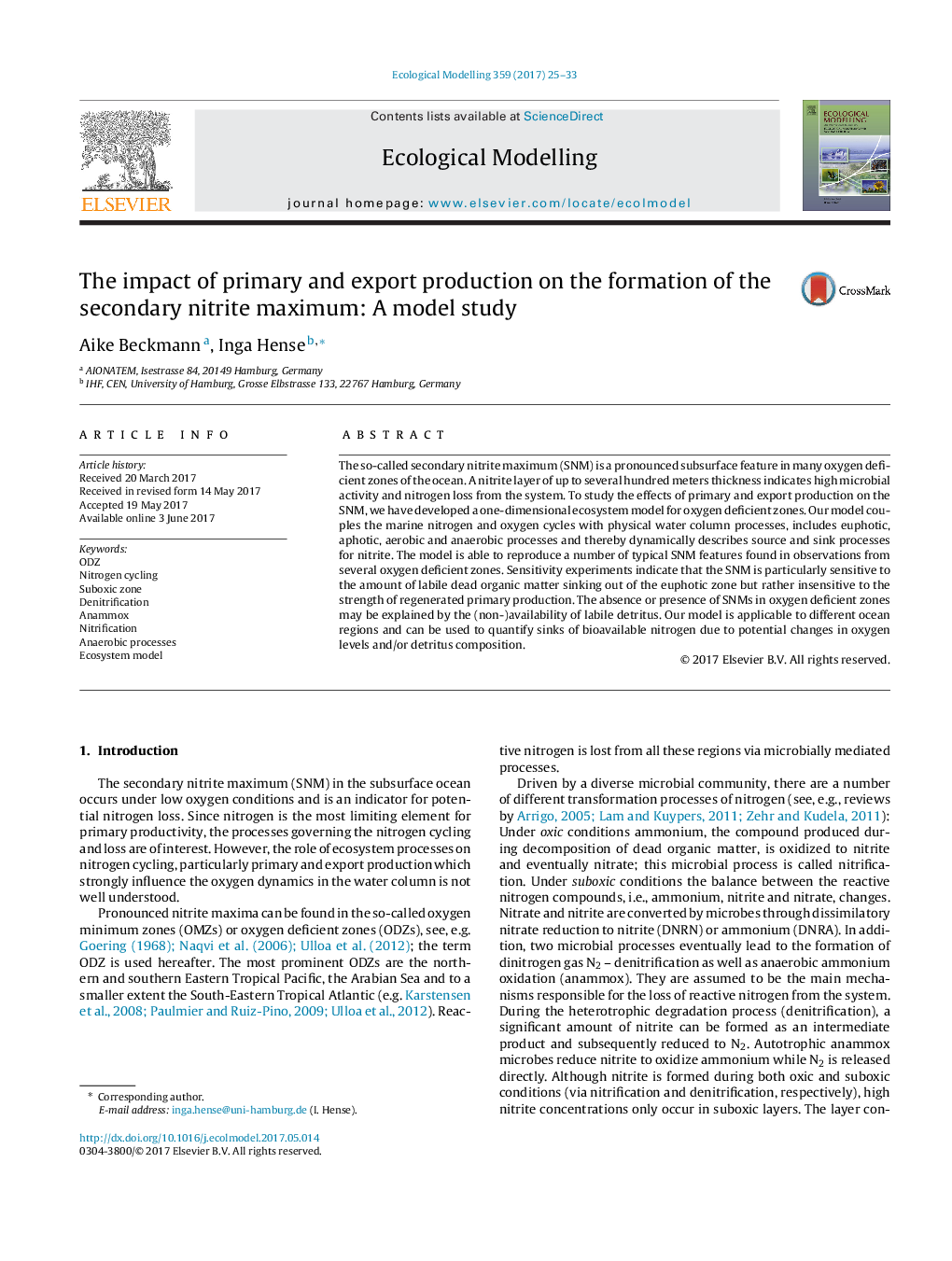| Article ID | Journal | Published Year | Pages | File Type |
|---|---|---|---|---|
| 5742118 | Ecological Modelling | 2017 | 9 Pages |
â¢An ecosystem model for the marine nitrogen cycle under oxic and suboxic conditions has been developed.â¢The model is able to describe the dynamics within secondary nitrite maxima in oceanic oxygen deficient zones.â¢The presence or absence of the secondary nitrite maximum depends on the amount of sinking labile organic matter.â¢The secondary nitrite maximum is insensitive to the strength of regenerated primary production.
The so-called secondary nitrite maximum (SNM) is a pronounced subsurface feature in many oxygen deficient zones of the ocean. A nitrite layer of up to several hundred meters thickness indicates high microbial activity and nitrogen loss from the system. To study the effects of primary and export production on the SNM, we have developed a one-dimensional ecosystem model for oxygen deficient zones. Our model couples the marine nitrogen and oxygen cycles with physical water column processes, includes euphotic, aphotic, aerobic and anaerobic processes and thereby dynamically describes source and sink processes for nitrite. The model is able to reproduce a number of typical SNM features found in observations from several oxygen deficient zones. Sensitivity experiments indicate that the SNM is particularly sensitive to the amount of labile dead organic matter sinking out of the euphotic zone but rather insensitive to the strength of regenerated primary production. The absence or presence of SNMs in oxygen deficient zones may be explained by the (non-)availability of labile detritus. Our model is applicable to different ocean regions and can be used to quantify sinks of bioavailable nitrogen due to potential changes in oxygen levels and/or detritus composition.
